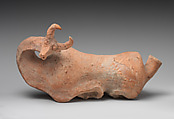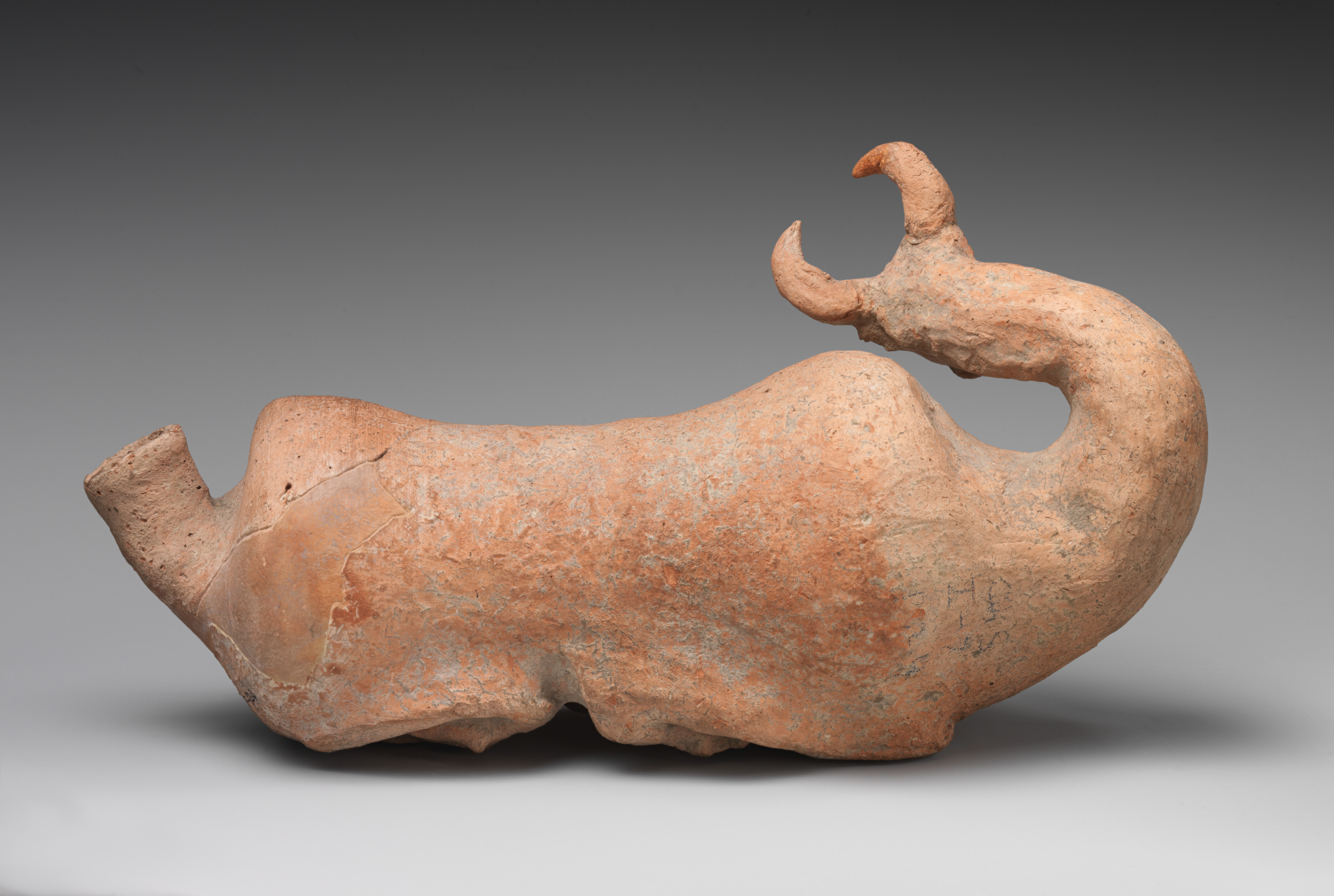Jug in the form of a recumbent bull
Not on view
This jug takes the shape of a recumbent bull with a long neck. The bull’s body is roughly cylindrical. It sits on two folds of clay that seemingly represent the bull’s folded legs, although the front fold is bent in the wrong direction. A thick spout also serves as the bull’s tail. The bull’s neck is slender and curls back so that its head faces to the left. The bull has a round snout, bulging eyes, and horns that curve toward one another. The jug is made of red clay.
This jug was excavated at Chekka Sabz (also spelled Chigha Sabz, meaning ‘green mound’) in the Pish-i Kuh (‘before the mountain’) region of Luristan in western Iran. It was found in a buried cache of objects which included two Neo-Elamite cylinder seals, two vessels in the form of human figures, and at least three other bull-shaped vessels. The seals date to the 8th-6th centuries B.C., and the pottery found with them, including this vessel, likely date to the same period. Although probably a small village in the Bronze Age, by the Iron Age Chekka Sabz had been reduced to a campsite, perhaps used by pastoralists as they transitioned between summer and winter pastures. The cache seems to have been buried in haste, and it is clear that whoever buried the objects did not, or could not, return to recover them.
The human figures from Chekka Sabz have their hands clasped before them. This pose is attested in Elamite art, where it appears to be the proper gesture to make in the presence of a god. Thus these figures probably represent attentive worshippers, and were likely meant to be offerings. The same is probably true of this bull-shaped jug.
Due to rights restrictions, this image cannot be enlarged, viewed at full screen, or downloaded.
This artwork is meant to be viewed from right to left. Scroll left to view more.



